Solana in Numbers
Despite the collapse of FTX and a decline in the price of SOL, Solana continues to be among the leading programmable smart contract platforms in terms of 1) developer interest, 2) traction on chain, 3) uptime, 4) validator decentralization and 5) speed. Let’s dive in.

Executive summary
- Developers: Solana developer toolkit downloads (.npm libraries) grew 20x between July 2021 and December 2022, compared to 13x for Ethereum dev toolkit downloads in the corresponding period. In December 2022, Solana had more than 2,000 total monthly active developers, an increase of 74% year over year. Since inception, an estimated 64,000 participants have attended Solana events (eg., hacker houses, summer camps), demonstrating the community has grown in size and depth. The flagship annual conference, Breakpoint, was attended by 3,500 participants in November 2022 (vs 2,100 in 2021).
- Traction: The number of Solana daily active wallets grew significantly since the beginning of 2023. It is now 4x larger than prior to the collapse of FTX, growing from ~30,000 to ~120,000. Solana is well positioned for further traction due to strategic partnerships such as Instagram native support of Solana non-fungible tokens (”NFTs”), the introduction of the Solana Mobile Stack, Solana Pay, and increased use in gaming. Post FTX, Magic Eden has remained the leading program and there was an increase in usage across the several decentralized finance (”DeFi”) protocols with the emergence of BONK. The increased activity in DeFi was driven by Jupiter, Orca and the emergence of OpenBook.
- Uptime: Following upgrades, Solana’s recent uptime has been 100%, even through the real-time stress-testing of the last several weeks, while processing over 45 million non-voting transactions per day (over 130x more than Arbitrum).
- Validators: Solana is sufficiently decentralized from the Nakamoto Coefficient perspective. The validator community has grown to over 2,000 validators. The validator community might have other challenges, such as further decentralization towards geographics and ISPs.
- Scaling: Monolithic blockchains might not scale for the all the use cases in the future. In the near-term there is attempt to provide scaling to Solana through the new Firedancer client implementation. And longer-term there are already attempts to introduce zero-knowledge (ZK) technology to Solana and provide further scaling.
1. Developers
Looking at weekly downloads of developer libraries, Solana has the highest growth of all smart contract ecosystems. In terms of total weekly downloads between July 2021 and December 2022, Solana grew over 20x compared to 13x for Ethereum over the same time period. In absolute numbers as of December 2022, Solana ranks second highest with 416k weekly downloads compared to 637k of weekly Ethereum library downloads.
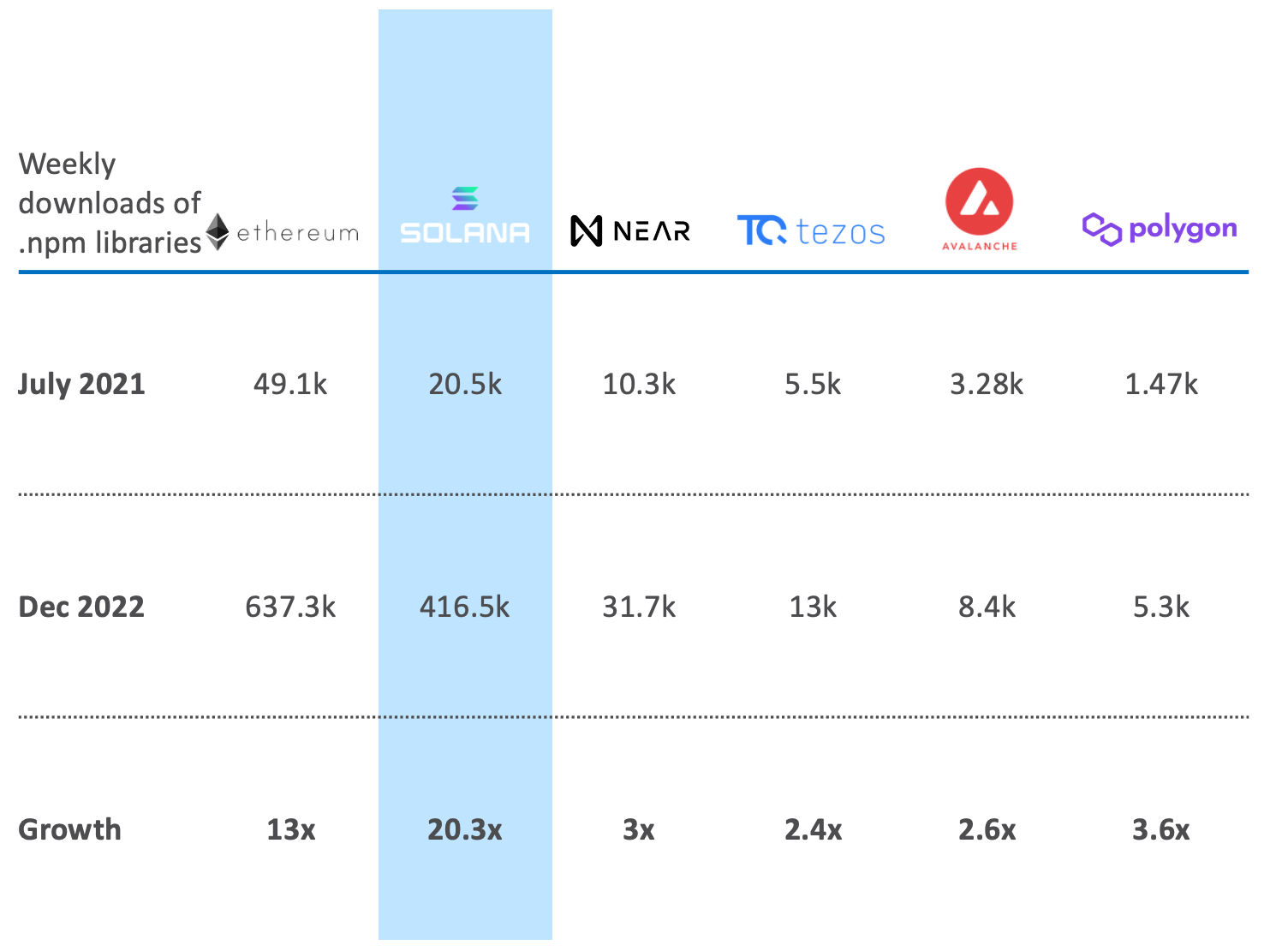
Source: https://www.npmjs.com/
The number of Solana developers grew 83% in 2022 and is the fastest growing ecosystem among ecosystems with 1,000+ total developers. There are now over 2,000 monthly active Solana developers according to the 2022 Electric Capital developer report.
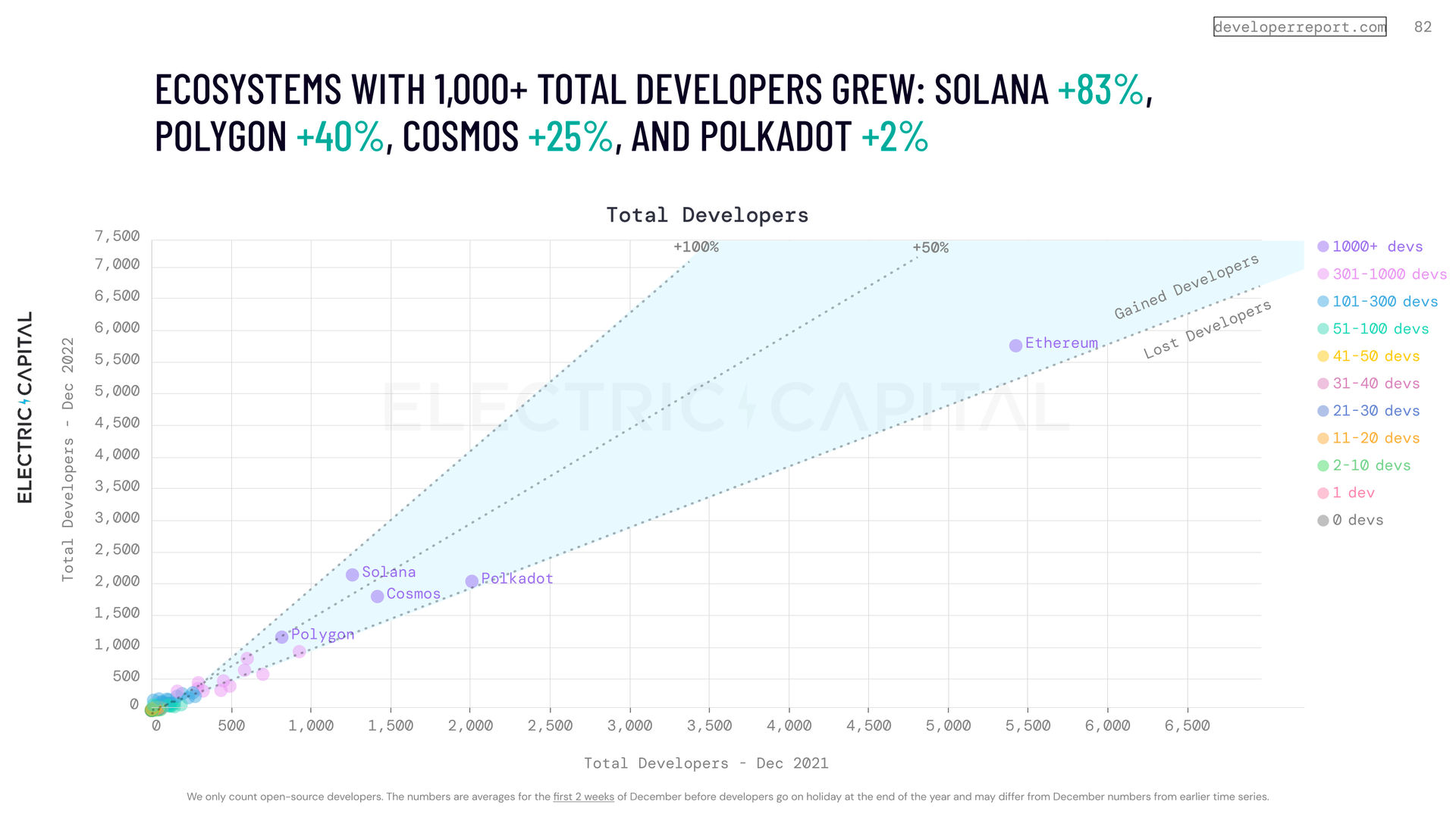
Source: Electric Capital
While the fallout from the events around FTX did impact Solana and the teams building on it, this presents an opportunity for the ecosystem to demonstrate it has already grown in size and depth to become bigger than any single backer. In fact, the Solana team has reached significant milestones in 2022 to develop their community by organizing 25 Hacker Houses around the globe, 10 summer camps and additional hackathons. An estimated total of 64,000 participants have attended Solana events since its inception. The progress can be seen even from the Solana monitored Github repositories that grew 3x over between December 2021 and November 2022.
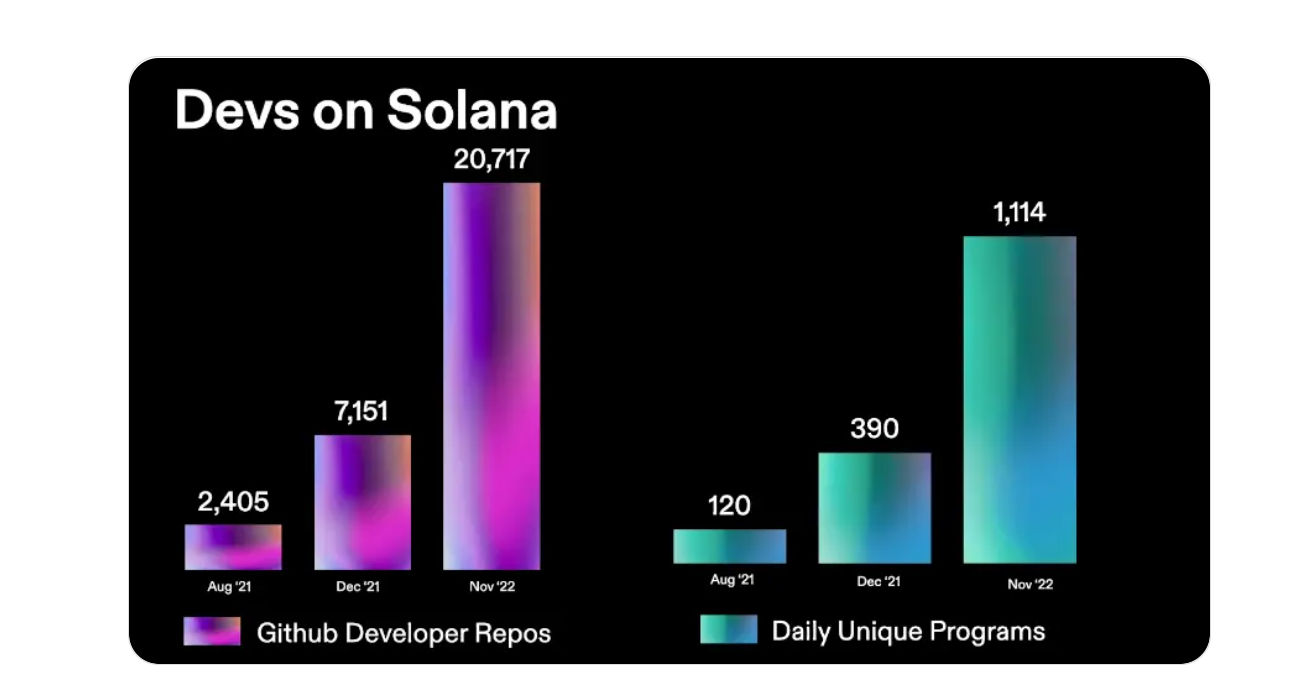
Source: Solana breakpoint presentation
2. Traction
There has been a significant increase in the number of Solana daily active wallets since the beginning of 2023. It is now 4x larger than before the collapse of FTX, growing from ~30,000 to ~120,000.
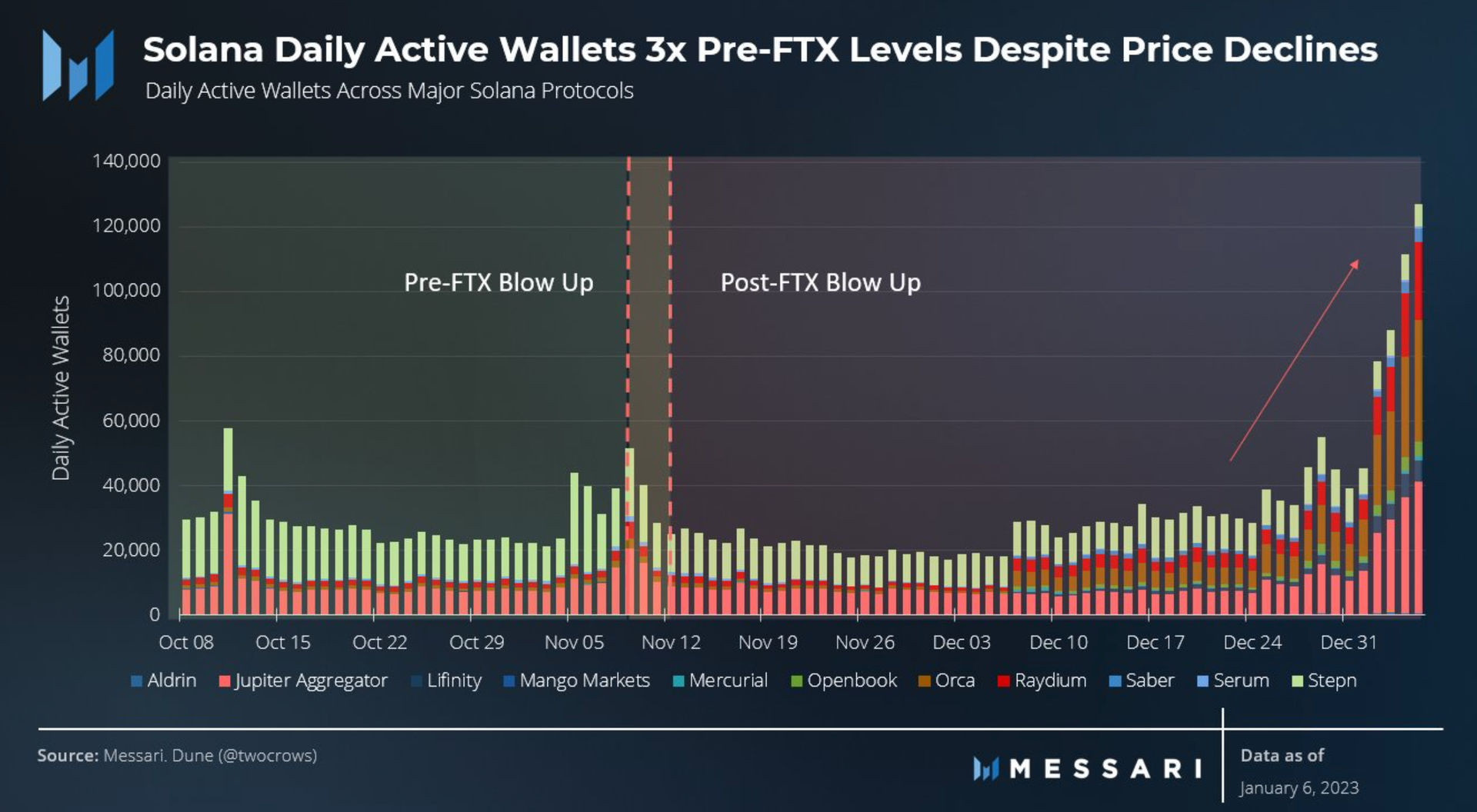
Source: Messari
The traction can also be observed in the number of unique Solana programs used, which has grown more than 250% in 2022.
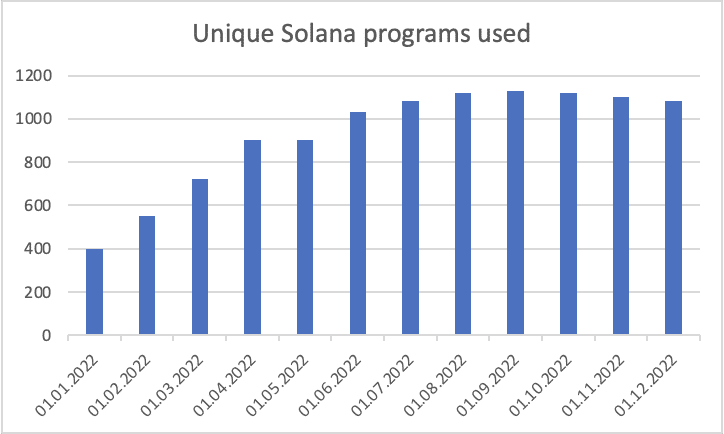
Source: ChainCrunch
The use cases on Solana span NFTs, DeFi, and gaming. The top five Solana programs with the highest number of unique active wallets (UAW) in the last 30 days are Magic Eden (186k), MeanFi (104k), Raydium (61k), Saber (56k), and Rarible (51k) according to dappradar. The top five Solana programs by volume in the last 30 days are Saber, Magic Eden, Marinade, Solend, and Larix, with $366M in total volume.
Solana has established itself as a major NFT chain. While NFTs are being traded on many chains, the majority of value is traded on Ethereum and Solana ($544M per month and $125M per month, respectively). ImmutableX or Polygon each represent only 10% of Solana NFT sales volume. Currently, Solana has a comparable number of NFT transactions as Ethereum, which implies the average transaction on Solana is lower in dollar value than the average NFT trade on Ethereum. In the past 30 days Solana NFT trading volume has increased by 74% and the number of NFT transactions increased by 99%, while the number of Solana NFT buyers decreased by 50% in the last 30 days, which means that Solana’s NFT buyer is on average nearly 3x more active than the one on Ethereum.

Source: CryptoSlam
Looking beyond traction with developers and users in the community, there are several additional important aspects to Solana’s positioning for future traction that are not receiving the attention they deserve:
- Solana has formed several meaningful partnerships to bring web2 into crypto, including Instagram’s support for NFTs, Google Cloud for validator tools, and Stripe for fiat onboarding and transactions.
- The future of crypto needs to be mobile and the new Solana Saga phone brings a significantly better experience for web3 users, as well as increased security since the seed phrase is stored as a secure enclave of the phone. This year, Solana Labs also introduced Solana Mobile Stack (SMS), enabling native Android web3 apps on Solana.
- Solana Pay, launched in January this year, provides decentralized payment rails enabling wider potential for in-person transactions that are also economical for small businesses. Solana Pay, in conjunction with the SMS, has the potential to accelerate adoption of crypto payments.
- Given the quick finality and low transaction costs, Solana provides the perfect infrastructure for web3 games. Stepn, a gamified fitness app that rewards users for walking daily, managed to gain over 700,000 monthly active users, showcasing that Solana tech stack is ready for mainstream adoption. The life of developers is made easier by the Solana Games Kit, a collection of resources, tools, and services that helps with implementing web3 elements into games. One of the most anticipated web3 games, Star Atlas, is also assisting devs by releasing the Foundation Kit, an SDK that connects Unreal Engine with the Solana blockchain and provides an interface for interacting with wallets.
- There is also support from the ecosystem - Solana Ventures joined forces with Forte and Griffin Gaming, creating a $150m fund focused on supporting games being built on Solana. During Solana Breakpoint, Solana Foundation Games Day attracted 1,100 attendees and there were multiple hackathons having gaming as one of the prize tracks.
3. Uptime
Solana has made significant progress in addressing its key problem, uptime. Solana had suffered a loss in reputation as a result of many blackouts in 2022. Solana’s uptime reached 99.4% YTD in December 2022, and 100% over the last 90 day period, which included the recent events around FTX that tested its stability.
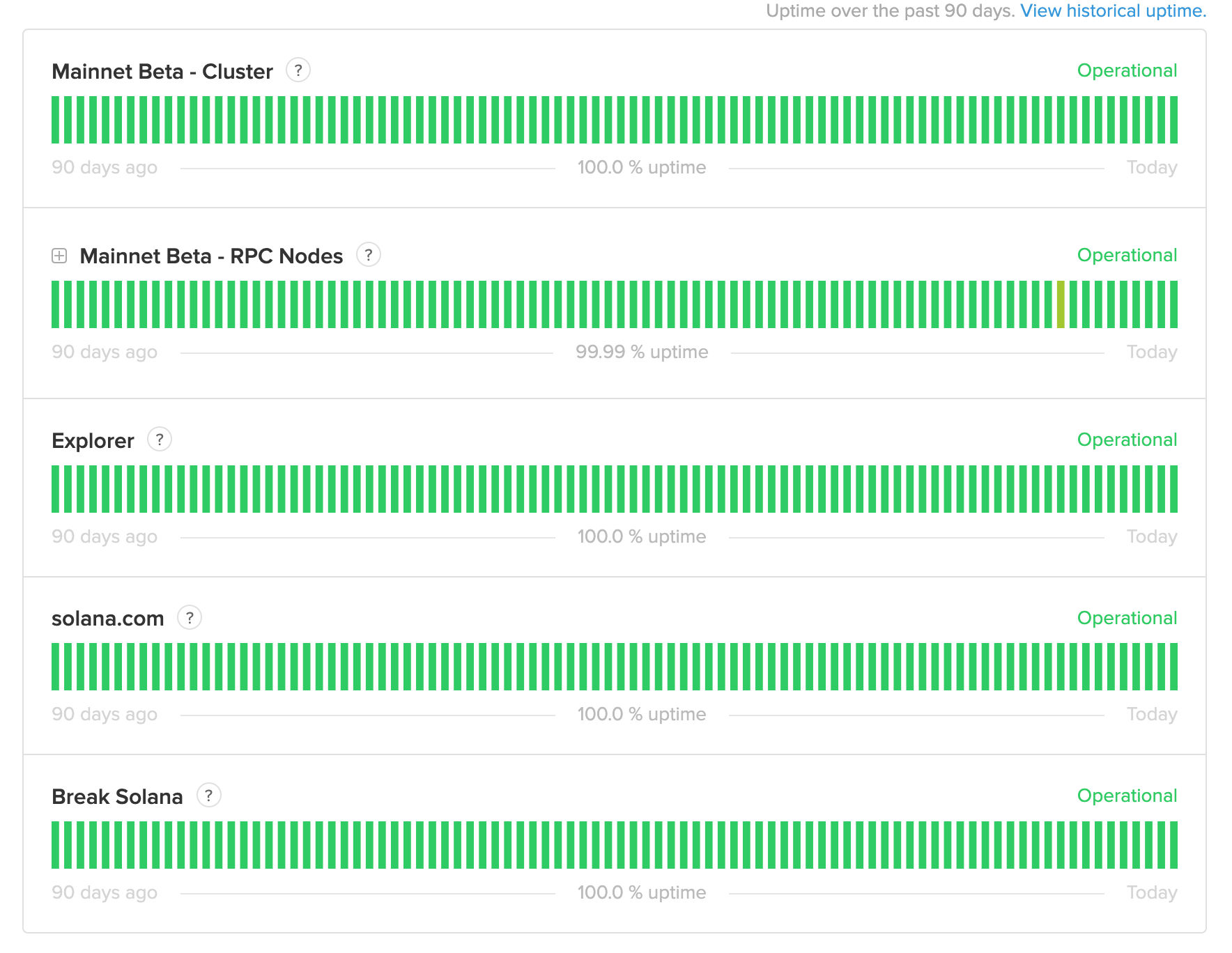
Source: https://status.solana.com/
The Solana Labs team has introduced several major upgrades, which have improved its performance and addressed previous issues leading to outages. These upgrades were:
- QUIC - a new networking protocol built by Google. QUIC gives validators more control over the network traffic. It is designed for fast asynchronous communication like User Data Protocol (UDP), but with sessions and flow control like Transmission Control Protocol (TCP). All validators support QUIC since the latest Solana upgrade in November.
- QoS - Stake-weighted Quality of Service (QoS) means that small validators can’t flood other validators with traffic anymore. Since these upgrades were incorporated, uptime has been 100%.
- Local fee markets (partially implemented) - provide a way for users to pay an additional fee during transaction execution to prioritize transactions that modify the same account. For example, a simple token transfer would require a lower total priority fee compared to a NFT mint that expresses the same level of urgency.
These improvements have delivered an improved performance as the network was operating above 3,000 TPS (including the vote transactions).
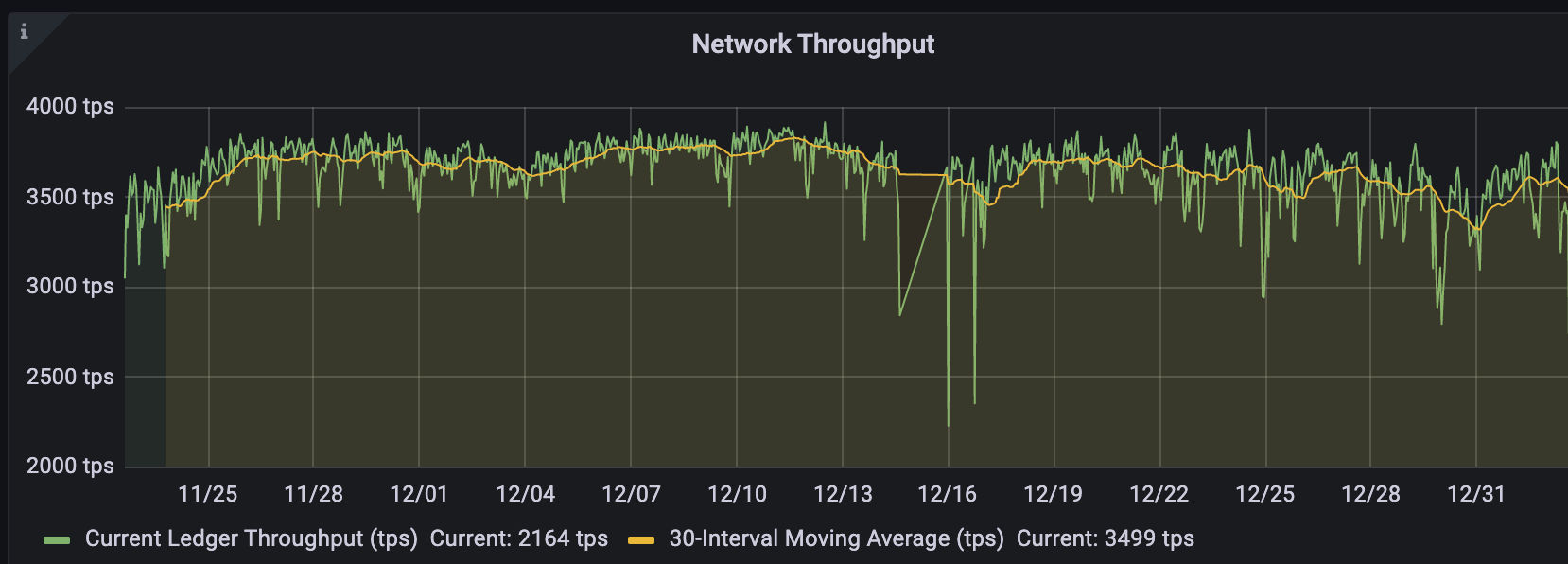
Source: RockawayX Infra
There are also upcoming improvements regarding the Solana runtime. As presented in the Solana community call on 20th January 2023, this includes:
- Move programming language support - ability to write frontend and deploy dApps in Move and have it be compiled and verified at deployment.
- Typed interfaces - typed interfaces and accounts make deployment and execution safer and more efficient, most notably removing the need to serialize or deserialize accounts.
- Limits & costs improvements - removing limits on reallocation and cross-program invocation (CPI) depth and new base costs for executing programs and cheaper CPI and syscalls.
Solana is charging a base fee and a priority fee for transaction execution. 50% of the Solana transaction fees are burned with the rest going to the block leader. The priority fees and burn mechanism are a great step towards achieving economic sustainability of Solana. Yet there is still work ahead as the validator rewards on Ethereum currently consist of 56% issuance and 44% fees and MEV, compared to Solana validator rewards that are currently 99% issuance and 1% fees and MEV.
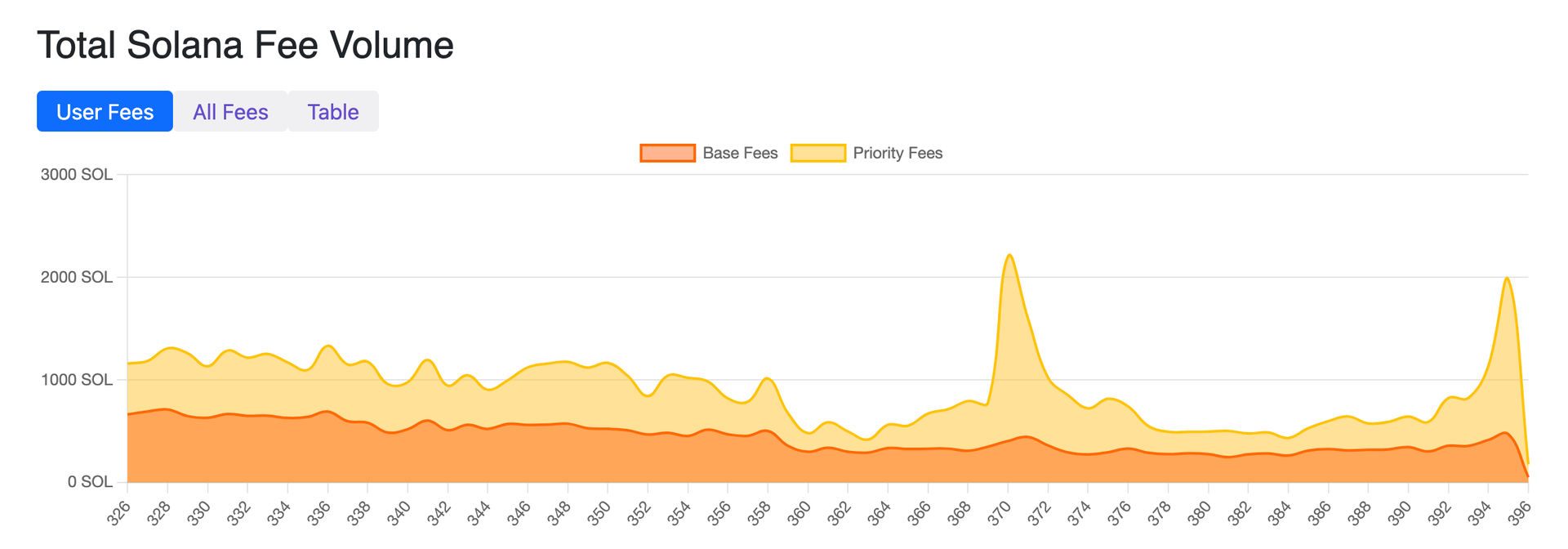
Source: https://solanacompass.com/statistics/fees
4. Validators
Decentralization is a complex topic to measure as it relies on many parameters, such as distribution of stake, countries, client diversity, and Internet Service Providers (ISPs). As shown by Observatory, the Nakamoto coefficient of Solana validators is 31, which is the minimum number of entities with 66% of total stake. Solana should be considered reasonably decentralized, as for example most networks on Cosmos have a Nakamoto coefficient in the range 5-16 (e.g., Quicksilver with 16 and Juno with 9).

Source: RockawayX Labs Observatory
Solana is also making efforts to decentralize further across other dimensions such as countries and ISPs. The robustness can be observed from the Hetzner incident in November 2022. The infrastructure provider, Hetzner, blocked over 1,000 Solana validators, causing more than 20% of the SOL staked to become delinquent. Since it was less than 33% of overall SOL supply, it didn’t cause any downtime. In the same month, Google's cloud computing division, Google Cloud, announced that it was running a validator on the Solana blockchain, and will likely add features aimed at welcoming Solana developers and node runners.
Solana is on a path to become the second network, after Ethereum, to have a second validator client. Decentralization of the validator client reduces risks connected with the client itself and is a strong signal of maturity. Jump Crypto started developing Firedancer, a fully independent Solana validator client implementation. The team behind Firedancer reported performance of 1.2M TPS in a test environment and while we can expect degradation of performance on mainnet, we remain optimistic that it will deliver a significant improvement overall.
There is still room for improvement for Solana, especially decentralization in other metrics (ISP, country and geography of the nodes) and sustainability of the validators. At the moment we observe the validators to be concentrated in two countries (USA and Germany) and with two ISPs (TeraSwitch and Amazon). The decentralization of the nodes can be achieved through better dispersion of existing validators rather than increasing the absolute number overall. There are also already plans to implement light clients, automated audits, formal verification, and type rich bytecode to further improve the decentralization and security of the network.
According to our calculations, around 44% of validators still need to achieve economic sustainability. There are currently more than 2,000 validators in 24 countries. We estimate the cost to run a validator is $4-6k per year, depending on the setup. On top of this there are operating costs associated with the voting transactions which can be roughly 1 SOL per day, resulting in further ~$4,560 yearly operating costs. A validator’s profitability is directly dependent on the number of tokens that are owned by the validator versus delegated by the 3rd parties. For a validator that stakes only tokens that it owns, and has no delegated tokens, it needs ~7,900 SOL to break even (assuming $20 per SOL, 100% commission, $6k server costs, $4,560 voting costs, and 6.7% inflation). In contrast, a validator with no tokens of its own needs around 79,000 SOL (assuming $20 per SOL, 10% commission, $6k server costs, $4,560 voting costs, and 6.7% inflation) delegated by third parties to break even. In a worst case scenario, assuming all stake is delegated, there are currently ~1140 (56% of the total) validators that are profitable at current token prices. This will be improved with development of MEV monetization and further utilization of the network. MEV on Ethereum currently represents 13% of all validator rewards or 30% of validator rewards when excluding issuance.
5. Scaling
Solana is currently the most performant blockchain with over 530 transactions per second (TPS) when excluding vote transactions. The Hedera blockchain comes second at 344 TPS, but it has only 20 validators compared to over 2,000 Solana validators.
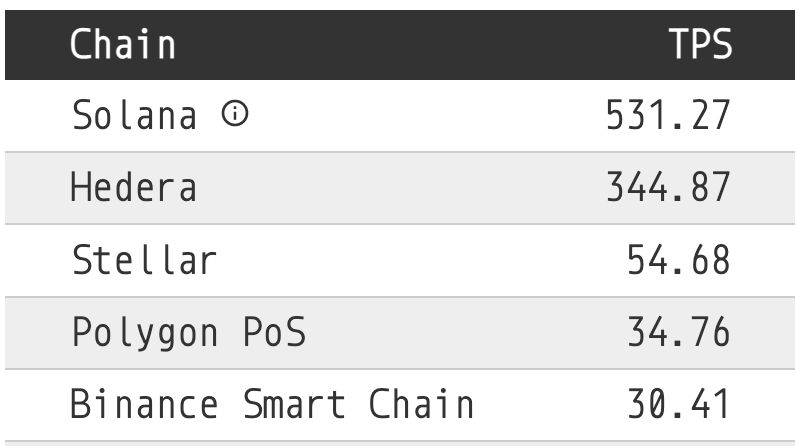
Source: https://realtps.net/
Projects like Eclipse use Solana virtual machine (VM) as L2 rollup, because unlike the Ethereum virtual machine (EVM), it enables parallel processing. If in the future, because of the network load, the current approach to scaling is not sufficient, there are already attempts to introduce zero-knowledge (ZK) technology on Solana and scale it further. One such example is applying ZK proofs to the Candyland NFT standard and mint 100,000 NFTs for ~15 cents in 15 seconds.
Authors: Marek Sandrik (@_marekSan_) and Filip Siroky (@fisiroky)
